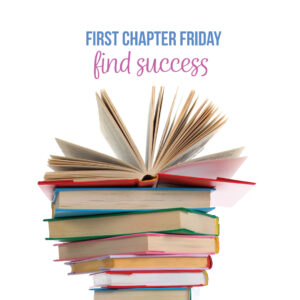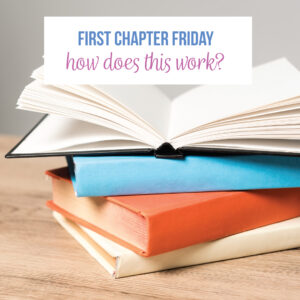First Chapter Fridays work well in my secondary classroom. Here are some tips I’ve learned.
(First, I want to acknowledge that I did not invent First Chapter Fridays. I saw elementary teachers talking about the process on Instagram. Then, I searched for ideas and couldn’t find solid ideas for high school students. So, I took the idea and developed the guidelines below. If you know who indeed created First Chapter Fridays, let me know, and I will credit them.)
I want my classroom culture to be one of language, of appreciating the written and spoken word. Like so many of you, I want a literacy-rich classroom full of independent reading and lots of questions about books. This past summer, I decided that one way to achieve that would be through First Chapter Fridays.
Success with First Chapter Fridays
Honestly, deciding to read aloud with my high school students was the best decision I’ve ever made as a teacher. (It really might be the singularly best one.) My relationships with students improved, and therefore my classroom management was smoother than in previous years. My students shared books that they treasure across their lives. I heard stories of Jack and Annie, Gooney Bird Greene, and Ready Freddy. My young readers shared about their first books they loved, to Kate Dicamillo and Neil Gaiman in middle school.
I learned that under a lot of teenager-ness, I have readers. We discussed literacy openly and honestly.
Our overall lessons improved too. I suddenly had a plethora of mentor sentences from books that we had shared. If students were stuck on a literary piece, I had shared knowledge to build upon. If we overwhelmingly disliked a book, we again had important conversations about what we expect from plot structures and themes. Literary time periods and devices that I hadn’t thought about since college came back to me, and I shared those ideas with students. One student checked out a college book of mine that detailed time periods. (I was ecstatically happy.)
How do First Chapter Fridays work?
Read every Friday. After a few weeks, students asked me on Thursday what book we would read. Students would provide me recommendations. Students who moved to other classes would return and talk about a book we had shared.
Overall, First Chapter Fridays were a smashing success. Below, I’ve detailed the process I used.
Overview
First Chapter Fridays are one of the highlights of my week, and students regularly share with me that they enjoy the process. Students love it when I read to them. Every Friday, I read one chapter of a new book to my students. Hopefully, one of them asks to read it. If no one takes the book, that’s ok! Students relaxed while I read, and they experienced a new author, genre, point of view, and on.
My general goal of First Chapter Fridays is to introduce students to new books. By doing so, I am also showcasing new genres and authors. Many ELA teachers feel like their curriculum is jam-packed. By spending ten minutes a week reading a new book, you can experience some freedom and choice.
I do NOT require assignments with First Chapter Fridays. Overall, I ask students to doodle or relax and to put electronics away. Active listening is it!
My goal is for students to experience literature with ZERO activities or assignments attached.
Process
This process has worked well with my freshmen, and I hope you can adapt the process to fit your needs.
Find an assortment of books. In my post about building a classroom library, I discuss ways to find inexpensive books. If you don’t own books, borrow some from the library. Share books with colleagues.
Pick your book!
For choosing a book, I have a general process. First, I consider the goal of new exposure to books. I want my students to see different genres and both male and female narrators. I want them to experience meaningful topics about refugees, blended families, bullied teens, and everything!
Second, I keep a running list of my First Chapter Friday books. I search for ones that will address new criteria. Maintaining a list also prevents me from an uneven exposure to one type of genre (for example). Finally, I read books that I might not like. I don’t mean inappropriate books, but rather books I would not personally read such as fantasy. First Chapter Friday should not be a display of my favorite books.
Finally, you might consider organizing your books thematically. For instance, mysteries work well with a spooky season, coming of age at the end of the school year, and on.
Research your book
Only you can judge what will work in your community and school. Be sure that the subject matter is acceptable. You can normally find a quick review online or ideas from Amazon.
I teach at a public school, but I know a private school might have different expectations.
Read the book, or at least read a few chapters. If you’re like I am, you’ll read the whole book. It’s fine; stand in the hall and read and greet students. I actually believe this small act of stepping into the hall to read has improved my classroom culture.
Plan the presentation
Sell your book! I do a bit of a “book talk.” For instance, when I used Deadly Design for a First Chapter Friday, I planned my presentation ahead of time:
I read the first chapter. We “met” the twin brothers. The brothers were genetically modified, and one was kept frozen for two years. The twins were actually born two years apart.
I read the back cover that explains how one twin will die of a genetic condition, leaving the younger twin two years to find a doctor to fix the problem. At this point, students were hooked.
I read the second chapter. They were so hooked!
Plan ahead what will work for your book and best engage students. I have also opened my reading with a short video from the author, an Instagram post from the publisher, or a book trailer. Students might not know those outside resources exist, and part of making First Chapter Friday meaningful is showcasing the larger world of literature, often, life outside their small town.
Read the book
As you continue with First Chapter Fridays, you’ll find your comfort zone. When you read the first chapter of your book, stay positive. As you continue throughout the year, you might find yourself adding voices or giving dramatic pauses.
The first time I animated a chapter, my actions were not planned. I simply jumped into a goofy voice. Immediately, I wondered if my kiddos would laugh at me, but instead, they were focusing on me. This makes sense! Humans listen to podcasts and radio shows. We listen to authors read their books. My students expect me to add emphasis now.
I do want to emphasize though that if you feel uncomfortable, don’t add that to your repertoire. I think that when students see an adult read, they are already benefiting from the experience, with or without voices.
Finish, and ask if anyone wants to borrow the book. Often, I do have students ask me to borrow the book. If I have a student who looked interested, I will ask that students quietly as the bell rings. They normally take the book.
If a student takes a book from first hour and I still need tor read for second hour, I grab another book. Since I keep a pile of books in my classroom library, I always have “next” books that I want to read. Having a few on hand solves the problem.
Choose a new book for the next Friday!
Start the process over again. Now that I have implemented First Chapter Fridays a few times in my classes, I have a system. I continually place books with intriguing first chapters in a pile. (My pile sits behind my desk on a shelf.) I rotate those books and add sticky notes for what books students have read from what classes. (This might be overwhelming your first year with First Chapter Friday. My point is that I never stop searching for new books.)
Invite students to Post your book on Wednesday or Thursday so that students can look it up online. I add a picture to our Google Classroom. I also showcase the book on our chalkboard ledge. Sometimes students will find the author on Instagram and Twitter. They will come to class knowing a little bit about the author.
My best tip: Don’t wait until Thursday night. Keep the system moving. Find a teacher club of other First Chapter Friday readers, and steal their book ideas.
Books
My librarian is fabulous, and when I have multiple students who want to read the book, she borrows extras for me. My first suggestion to finding books for First Chapter Friday is to collaborate. If other teachers, administrators, or parents will share books, ask to borrow them.
Second, you can often find a free copy of a reading online. A simple video search will yield great results.
If you don’t have more than one copy of a book, find similar books or give students a similar book. For instance, I once read a Sarah Dessen book for First Chapter Friday, and I ended up distributing several of her books to interested students. Similarly, when I read All American Boys, my kids took other books by Jason Reynolds.
The point for me is that I was putting books into the hands of students.
Will this be an independent reading program?
You might still have questions which is ok!
First Chapter Friday can be part of an independent reading program, especially if your reading can help students connect to literature.
But! The process should be fun, and you can make it your own. Other teachers use Book Trailer Tuesday or Book Red Thursday too. Whatever variation, whatever hard work you are putting into reading with your classes, you’re succeeding.
Finally, no matter how you set up your reading, young readers will benefit the entire year from whatever label you’d like to give your program.
Those are my thoughts and processes behind First Chapter Friday with secondary students. Have you tried First Chapter Friday? What worked for you? What concerns do you have? I’m interested to see other high school teachers’ processes.
All together!
My students do not complete activities while I read. Instead, literacy is an ongoing discussion in our room. We chat about statistics, life-long learning, vocabulary, and reading choices. Our bulletin boards reflect book suggestions too. Finally, my connections with parents stress the importance of lifelong reading.













